Get ready for a thrilling adventure as we dive into the fascinating world of rivers! From the awe-inspiring Nile, where civilizations thrived, to the teeming Amazon rainforest, rivers have shaped our planet’s destiny. Join us as we explore the most famous and enchanting waterways, uncovering their secrets and revealing their profound impact on history, culture, and nature. We’ll unravel the stories of the top rivers, the most important waterways, and some of the world’s most celebrated rivers. Along the way, we’ll uncover the wonders of the largest and deepest rivers, as well as some of the prettiest and most mysterious ones. So, buckle up for an unforgettable journey through the watery veins of our planet!
Famous Rivers: A Journey Downstream
Let’s take a trip around the world, not by plane, but by boat! We’re diving into the stories of some of the planet’s most famous rivers. These aren’t just any bodies of water; we’re talking about legendary giants like the Nile, known for holding the title of the longest river, and the Amazon, bursting at the seams with an incredible diversity of plants and animals.
These rivers are like the main characters in a history book. Civilizations were born and thrived along their banks for centuries. Even today, bustling cities rely on them. They’ve witnessed empires rise and fall, and their currents likely carry echoes of the past.
But it’s not just about human history – these rivers are teeming with life! They support a mind-blowing array of plants and animals, creating some of the most vibrant ecosystems on Earth. Sadly, though, these watery wonders are facing some tough times. Pollution, climate change, and overuse are putting a strain on their health. But it’s not all doom and gloom! People are working hard to protect these natural treasures. We’ll explore the success stories and see how we can all do our part to keep these rivers flowing for generations to come.
So, are you ready to embark on this aquatic adventure? Let’s navigate the globe, one famous river at a time, to uncover their secrets and understand why their protection is crucial for our planet’s well-being.
Which Are the Top 10 Rivers in the World?
We’ve already talked about how impressive the world’s biggest rivers are, but what about the top rivers? You know, the ones that truly stand out? Let’s dive into the top contenders and see why they’re considered giants among rivers.
1. The Amazon: It’s Not Just a Rainforest Thing
When it comes to sheer volume, the Amazon River is in a league of its own. Spanning a mind-boggling 6,992 kilometers (that’s over 4,300 miles!), this South American giant carries a fifth of all the freshwater on Earth into the Atlantic Ocean. Just imagine the power! Its drainage basin, covering a massive 7,050,000 square kilometers, sprawls across nine different countries. We’re talking serious watery real estate here.
2. The Nile: More Than Just Pyramids
While the Amazon might be the heavyweight champ in terms of volume, the Nile River is often recognized as holding the title for length. This iconic river, stretching over 6,853 kilometers through northeastern Africa, has seen it all. Ancient civilizations were born and thrived along its banks, leaving behind incredible wonders like the pyramids of Giza. Even today, the Nile remains a lifeline, flowing through bustling cities like Cairo and Khartoum. The iconic Nile River flows along the capital city of Egypt.
3. The Yangtze: Powering Up China
Shifting our focus to Asia, the Yangtze River dominates the landscape, flowing 6,300 kilometers through the heart of China. This river isn’t just a pretty sight; it’s a powerhouse, literally! Massive hydroelectric dams, including the awe-inspiring Three Gorges Dam, harness the river’s energy, making it crucial to China’s energy grid. And of course, let’s not forget the bustling cities and diverse ecosystems that line its banks.
4. The Mississippi: America’s Liquid Highway
Think of the Mississippi River as America’s main artery. Winding its way 6,275 kilometers through the central United States, it’s a lifeline for trade, agriculture, and even a bit of leisure. From the Great Lakes all the way down to the Gulf of Mexico, the Mississippi connects a web of cities, farms, and industries, making it one of the most important rivers in North America.
5. The Yenisei: Siberia’s Untamed Jewel
Deep within the wilds of Siberia, the Yenisei River carves its path for a remarkable 5,539 kilometers. What makes the Yenisei so special? It’s practically untouched. Its pristine waters and rugged surroundings offer a rare glimpse into the raw, unspoiled beauty of the Siberian wilderness.
6. The Yellow River: A River of Two Tales
The Yellow River, often called “China’s Sorrow” due to its history of devastating floods, has a story as complex as the sediment that gives it its name. Despite the challenges posed by its heavy silt load, this 5,464-kilometer river has been the cradle of Chinese civilization for millennia, nurturing settlements and agriculture along its banks.
7. The Ob: Where Rivers Meet the Sea
Flowing westward across Siberia, the Ob River stretches for an impressive 5,410 kilometers before spilling into the Kara Sea. Formed by the merging of the Irtysh and Biya rivers, the Ob creates a massive estuary known as the Gulf of Ob, a haven for biodiversity.
8. The Parana: South America’s Southern Belle
In the heart of South America, the Parana River winds its way for 4,880 kilometers, showcasing the continent’s diverse landscapes. When the Parana River joins forces with the Uruguay River, they create the mighty Rio de la Plata estuary. This estuary isn’t just any estuary; it’s one of the widest in the world! And let’s not forget the Parana’s fertile floodplains, teeming with life and supporting countless communities.
9. The Congo: Africa’s Enigmatic Giant
The Congo River, a mighty force carving its way through the heart of Africa, stretches for an impressive 4,700 kilometers. What sets the Congo apart is its incredible depth – in some places, it plunges deeper than any other river on Earth! This, combined with its powerful current, makes it a force of nature and a source of endless fascination.
10. The Amur: A River of Borders
The Amur River, flowing for 4,444 kilometers through northeastern Asia, is more than just a geographical feature; it’s a boundary marker. For much of its length, it forms the border between Russia and China, making it a river of both division and connection. Its basin is a tapestry of diverse landscapes, from the rolling steppes of Mongolia to the dense forests of the Russian Far East.
Key Takeaways:
- The Amazon holds the most freshwater of any river on Earth.
- The Nile is believed to be the longest river in length.
- Rivers are essential for transportation, agriculture, power generation, and supporting diverse ecosystems.
- Protecting these magnificent waterways is crucial for the health of our planet.
What are the 5 Most Important Rivers?
We’ve talked about some fascinating rivers already, but now let’s dive into a handful that are considered truly exceptional. Why? Well, it’s not just about their size or length, although those things are impressive! It’s more about their impact on the environment, history, and even our lives today. So, get ready to explore five rivers that have shaped our world in extraordinary ways:
1. The Amazon River: Imagine a river so powerful, it carries one-fifth of all the freshwater on Earth! That’s the Amazon, flowing through the heart of South America. It’s not just big; it’s a lifeline. This incredible river breathes life into the Amazon rainforest, the largest on the planet and a treasure trove of biodiversity. Scientists are constantly discovering new species there, and it plays a crucial role in regulating the Earth’s climate.
2. The Nile River: For centuries, the Nile has been more than just a river; it’s a legend. Flowing through northeastern Africa, it holds the title of the world’s longest river. Ancient Egyptians worshipped the Nile as a god, and for good reason. Its annual floods brought fertile silt that sustained their civilization for millennia. Today, the Nile still provides water and lifeblood to millions, and its historical significance continues to captivate us.
3. The Yangtze River: Shifting our focus to Asia, we encounter the mighty Yangtze, the longest river on the continent. This river is a powerhouse, literally! It’s a major source of hydropower for China, and its waters are essential for agriculture and transportation. The Yangtze basin is home to a huge population, and the river has been a vital trade route for centuries, influencing the region’s culture and economy.
4. The Mississippi River: This iconic river snakes its way through the heartland of the United States, a silent witness to history. From Native American cultures to the exploration of the West, the Mississippi has shaped the destiny of a nation. It’s a navigable waterway, connecting the Great Lakes in the north to the Gulf of Mexico in the south. This makes it a critical route for shipping and trade, impacting the economy even today.
5. The Yenisei River: Imagine a river so wild and pristine, it feels untouched by time. That’s the Yenisei, flowing through the rugged landscapes of Siberia. This icy giant carves its way through mountains and forests, offering a glimpse of untamed beauty. The Yenisei is a haven for wildlife and a reminder of the importance of preserving our planet’s natural wonders.
Why These Rivers Matter
These five rivers are just a small sample of the mighty waterways that grace our planet. Each river, from the smallest stream to the mightiest river, plays a vital role in the intricate web of life. They provide us with water, support diverse ecosystems, and offer a glimpse into the history of our planet.
As we learn more about these incredible rivers, we’re reminded of the importance of protecting them. Climate change, pollution, and damming all pose threats to their health and the well-being of the communities that depend on them. By understanding their significance, we can all do our part to ensure these natural wonders continue to flow for generations to come.
What is the World’s Most Famous River?
Picking the absolute most famous river is kinda like trying to pick the best ice cream flavor – everyone has their favorite!
We’ve already talked about how the Nile River is a top contender. It’s not just crazy long (over 6,650 kilometers!), but it was like the lifeblood of ancient Egypt. Imagine – the pharaohs, the pyramids, all those incredible stories… they all happened right along the Nile.
Then you’ve got the Amazon River in South America. This one’s not playing around when it comes to size. It’s absolutely massive, carrying a ridiculous amount of the world’s freshwater. We’re talking 20%! Plus, the Amazon rainforest surrounding it? Total biodiversity hotspot.
And let’s not forget about North America’s own celebrity river, the Mississippi. This giant cuts right through the heart of the US, clocking in at over 3,700 kilometers. It’s been a major player in shaping the US, powering farms, moving goods, and generally being super useful.
So, who wins the “Most Famous River” title? It probably depends on who you ask! Each of these rivers has its own claim to fame, whether it’s their incredible size, their historical importance, or the vital role they play in their environment. One thing’s for sure: these rivers aren’t just impressive, they’re downright legendary.
What are the Top 20 Largest Rivers in the World?
Picking up from our exploration of the world’s most impressive rivers, let’s dive deeper into the top contenders! We’ve already encountered some mighty names, and now it’s time to uncover more about what makes them so fascinating.
Imagine traveling along the Nile, stretching a mind-boggling 6,650 kilometers! It’s no wonder it holds the crown as the world’s longest river. Then there’s the Amazon, a powerhouse of a river that pours out more water than any other on Earth – talk about making a splash! And let’s not forget the Yangtze, the longest river in Asia, meandering for an impressive 6,300 kilometers. It’s a reminder that these natural wonders come in all shapes and sizes, each leaving its own mark on the landscape.
Of course, we can’t forget the rivers closer to home for many of us. The Mississippi, a lifeline connecting the Great Lakes to the Gulf of Mexico, has played a crucial role in shaping North America. And then there’s the Yenisei, a river that whispers tales of adventure as it winds its way through the Siberian wilderness. Each of these rivers has a story to tell, weaving together geography, history, and the delicate balance of nature.
Let’s take a look at the top 20 longest rivers, ranked by their impressive lengths:
| Rank | River | Continent | Length (km) |
|---|---|---|---|
| 1 | Nile | Africa | 6,650 |
| 2 | Amazon | South America | 6,400 |
| 3 | Yangtze | Asia | 6,300 |
| 4 | Mississippi | North America | 6,275 |
| 5 | Yenisei | Asia | 5,539 |
| 6 | Yellow River | Asia | 5,464 |
| 7 | Ob | Asia | 5,410 |
| 8 | Paraná | South America | 4,880 |
| 9 | Congo | Africa | 4,700 |
| 10 | Amur | Asia | 4,444 |
| 11 | Lena | Asia | 4,400 |
| 12 | Mekong | Asia | 4,350 |
| 13 | Mackenzie | North America | 4,241 |
| 14 | Niger | Africa | 4,180 |
| 15 | Murray-Darling | Australia | 3,672 |
| 16 | Volga | Europe | 3,690 |
| 17 | Shatt al-Arab | Asia | 3,596 |
| 18 | Madeira | South America | 3,239 |
| 19 | Purus | South America | 3,200 |
| 20 | Yukon | North America | 3,185 |
Exploring the Wonders
These rivers are more than just lines on a map; they are dynamic ecosystems, cultural corridors, and sources of life for countless communities. Scientists are constantly learning more about their complex interactions with the environment and the impact of human activities on their health. For example, there are ongoing studies about how climate change might affect the flow and biodiversity of these rivers.
As we continue to unravel the mysteries of these natural wonders, it’s crucial to remember their importance and advocate for their protection. Whether it’s the mighty Amazon or the historic Mississippi, each river plays a vital role in the intricate web of life on our planet.
What is the Prettiest River in the World?
Picking the “prettiest” river is like trying to choose the best flavor of ice cream – everyone has their favorites! It’s totally subjective. But, some rivers are so stunning and unique, they often top the “must-see” lists for travelers and nature lovers.
Take the Amazon River, for example. This South American behemoth isn’t just big – it holds more water than any other river on Earth! It’s a powerful force of nature, surrounded by a vibrant rainforest bursting with life. Just imagine cruising down this massive waterway, the sounds of the jungle all around you – it’s a truly immersive experience.
Then you have the Nile River. This river is like a journey through time. As the longest river in the world, it’s been the lifeblood of civilizations for centuries. Ancient temples and tombs line its banks, whispering stories of pharaohs and empires. Sailing down the Nile is like stepping back into history.
Want something a little more modern? How about the Thames River? This river cuts right through the heart of London, giving you a front-row seat to the hustle and bustle of one of the world’s most exciting cities. But don’t worry – the Thames isn’t all concrete and skyscrapers. It’s lined with iconic bridges, charming pubs, and historic landmarks, making it a surprisingly picturesque urban escape.
If you’re looking for pure, untouched beauty, the Soča River in Slovenia might steal your heart. This river is famous for its almost unbelievably clear turquoise water – it’s so vibrant, it practically glows! Add in lush green valleys and dramatic mountain peaks, and you’ve got yourself a postcard-worthy view.
Speaking of postcards, the Li River in China is another one for the books. This river winds its way through the incredible karst mountains – those towering limestone formations that look like something out of a fantasy film. Imagine drifting along in a bamboo raft, surrounded by these majestic peaks and the stillness of nature.
The Mekong River is another fascinating choice. This river is like a journey through Southeast Asia, flowing through six different countries! Each stretch of the Mekong offers a glimpse into different cultures and landscapes. One day you might be exploring ancient temples, the next you’re haggling for souvenirs at a vibrant floating market.
And of course, we can’t forget about the Colorado River. This North American icon is famous for its power. Over millions of years, it’s carved its way through rock, creating some of the most dramatic canyons in the world, including the awe-inspiring Grand Canyon. Just standing at the rim of the Grand Canyon and seeing the Colorado River snaking its way through the bottom is a humbling experience.
So, what’s the prettiest river? That’s really up to you! Each of these rivers offers something special, from the raw power of nature to the echoes of ancient history. They remind us how diverse and beautiful our planet truly is. Which one will you explore first?
What are the Top 5 Longest Rivers?
Okay, so we’ve been talking about these giant rivers, right? These waterways are so massive they cross entire countries! But when it comes to sheer length, who takes the crown? Let’s dive into the top five contenders:
- The Nile: A Journey Through History (Approximately 6,650 km) This legendary river, often called the “father of African rivers,” claims the top spot. It flows north through eleven countries, shaping ancient civilizations and sustaining life for millennia. It’s worth noting there’s some debate about its exact length, with estimates varying slightly.
- The Mighty Amazon: A Force of Nature (Around 6,400 km) Holding the title for the largest river by volume—meaning it carries the most water—the Amazon is a powerhouse! This South American titan boasts incredible biodiversity, with a vast rainforest teeming with unique species.
- The Mississippi-Missouri: A North American Giant (About 6,270 km) Snaking its way through the heart of the United States, this combined system earns its place among the giants. It’s a vital artery for transportation and trade, connecting communities and shaping the landscape.
- The Yangtze: A Lifeline for Asia (Roughly 6,300 km) This river, flowing through China, is the longest in Asia and the fourth longest globally. It holds immense cultural and economic significance, supporting millions of people and playing a crucial role in China’s history.
- The Yenisei: A Siberian Powerhouse (Approximately 5,500 km) Flowing north through the vast expanse of Siberia, the Yenisei is the longest river in Russia. It carves through diverse landscapes, from rugged mountains to icy plains, showcasing the raw beauty of this region.
It’s fascinating how these rivers, each with its unique character and significance, have shaped civilizations, ecosystems, and our planet. Research on these waterways continues to uncover new information, reminding us of the power and wonder of the natural world.
What are the Top 10 Deepest Rivers in the World?
So, we’ve talked about the mighty Congo River, plunging deeper than any other river on Earth. It’s pretty mind-blowing to think about, right? But what about the rest of the world’s watery wonders? What other rivers have carved out incredible depths over millions of years? Let’s dive into the top 10 deepest rivers in the world and uncover the secrets beneath their surfaces.
Now, pinning down the exact depth of a river can be tricky business. It’s not like measuring a swimming pool! Riverbeds are constantly shifting, and the deepest points can change depending on the season and rainfall. But based on the best information we’ve got, here’s a glimpse at the likely contenders for the top 10:
| Rank | River | Location | Maximum Depth (estimated) | Interesting Fact |
|---|---|---|---|---|
| 1 | Congo River | Africa | 720+ feet (220+ meters) | Holds more than 10% of the world’s fish species! |
| 2 | Brahmaputra River | Asia | 380 feet (116 meters) | Flows through Tibet, India, and Bangladesh. |
| 3 | Yangtze River | Asia | 364 feet (111 meters) | The longest river entirely within Asia. |
| 4 | Danube River | Europe | 262 feet (80 meters) | Flows through more countries than any other river. |
| 5 | Zambezi River | Africa | 255 feet (78 meters) | Home to the awe-inspiring Victoria Falls! |
| 6 | Mekong River | Southeast Asia | 246 feet (75 meters) | Supports a vast network of floating markets. |
| 7 | Mississippi River | North America | 200 feet (61 meters) | Traveled by early explorers and steamboats. |
| 8 | Amazon River | South America | 197 feet (60 meters) | Largest river by discharge volume in the world! |
| 9 | Ob River | Russia | 164 feet (50 meters) | Freezes over for several months each year. |
| 10 | Yenisei River | Russia | 151 feet (46 meters) | Flows north into the Arctic Ocean. |
A Few Things to Keep in Mind
- Ongoing Research: Just like our understanding of the ocean depths, our knowledge of rivers is always evolving. Scientists are constantly using new technologies and research methods to get a clearer picture of what lies beneath the surface.
- The Power of Nature: These incredible depths are a testament to the awesome power of nature. Over millions of years, the flow of water has carved through rock, creating canyons and channels that continue to amaze us.
- More to Discover: While we’ve identified some of the deepest rivers, there’s still so much we don’t know. There are countless rivers and tributaries around the world, and it’s entirely possible that even deeper spots are waiting to be discovered!
So there you have it—a peek into the hidden depths of some of Earth’s most fascinating rivers. Each one holds its own unique story, shaped by geology, climate, and the passage of time.
What is the 15th Largest River in the World?
We’ve already talked about how vital rivers are, acting like the veins of our planet, supporting life and shaping the land around them. So, let’s dive into number 15 on the list of the world’s longest rivers – the mighty Ob River.
Flowing over 3,650 kilometers, the Ob carves its way through the western wilderness of Siberia, Russia. This incredible river begins its journey high up in the Altai Mountains, a region known for its breathtaking scenery. Think towering peaks, pristine lakes, and vast, open landscapes. From there, the Ob gathers momentum and water from its many tributaries, eventually emptying into the icy waters of the Arctic Ocean. All in all, the Ob and its branching network of waterways drain a massive area–over 2.9 million square kilometers.
The Ob River isn’t just impressive in size; it’s a lifeline for the region. Its waters are teeming with a diverse mix of aquatic life, including fish that are crucial for local communities and commercial fishing. The surrounding floodplains, enriched by the river’s flow, provide fertile ground for agriculture, making the Ob essential for food production. And of course, like many large rivers, the Ob plays a crucial role in transportation, hydropower, and even irrigation.
But even a river as mighty as the Ob faces threats. Industrial pollution, runoff from agriculture, and the ever-present challenges of climate change all contribute to a decline in water quality and habitat loss. Protecting the Ob River, and all rivers for that matter, requires a global effort. It’s about safeguarding these invaluable resources not just for the incredible ecosystems they support but for future generations to come.
Which is Asia’s Largest River?
Alright, so we’ve already established that Asia’s got some seriously impressive rivers, but if we’re talking sheer size, the Yangtze River, or as the locals call it, the Chang Jiang, blows the competition out of the water. Picture this: a 6,300-kilometer behemoth snaking its way from the frosty heights of the Tibetan Plateau all the way to the East China Sea. It’s not just Asia’s champ; it’s the third longest river on the entire planet!
This isn’t some remote, icy stream either. We’re talking about a river that cuts through the heart of China, gracing eleven different provinces with its presence. For millennia, the Yangtze has been a lifeline for the millions living along its banks. It’s their water source, their highway, their source of food, and frankly, a big part of what makes this region tick.
Now, the Yangtze doesn’t just boast about its size. Oh no, this river is practically dripping with history and cultural significance. Think about it, a river this old has seen it all, and its banks are dotted with ancient cities, historical sites, and even a few UNESCO World Heritage wonders. It’s safe to say the Yangtze River is woven into the very soul of China.
Here’s the rundown:
- The Yangtze River is a total rockstar, holding the titles of both Asia’s longest river and the third longest globally.
- This mighty river acts like a massive artery, pumping life into eleven Chinese provinces, providing water, transportation, and food.
- But wait, there’s more! The Yangtze River also happens to be a treasure chest of history and culture, boasting a bunch of UNESCO World Heritage sites along its banks.
Which is the 12th Longest River in the World?
We’ve already journeyed through some of the world’s most impressive rivers, those watery highways that stretch across continents. But our exploration of these natural wonders isn’t over yet! We’re on a quest to find out: Which river holds the 12th spot on the list of the world’s longest?
Let’s be honest, when we think of long rivers, our minds probably jump to giants like the Nile or the Amazon. And rightfully so! The Nile, snaking through Africa for a mind-boggling 6,650 kilometers, is practically in a league of its own. Then there’s the Amazon, a powerhouse of a river carving its way through South America for about 6,400 kilometers. And let’s not forget the mighty Yangtze in Asia, clocking in at over 6,300 kilometers. Even the Mississippi, flowing right here in North America, earns its place of honor at over 5,970 kilometers long.
But what about that 12th spot? Well, that distinction belongs to a river that’s a bit off the beaten path for many of us: the Mekong River. Flowing for approximately 4,350 kilometers, this Southeast Asian giant is a lifeline for the region, supporting a vast array of life and cultures.
Think about it: every single one of these rivers, from the longest to those further down the list, has a story to tell. They’ve witnessed the rise and fall of civilizations, shaped landscapes, and supported a dazzling array of life. The Nile, for instance, was the lifeblood of ancient Egypt, while the Amazon rainforest, teeming with biodiversity, owes its existence to the mighty river that shares its name.
Exploring these rivers isn’t just about memorizing names and numbers. It’s about understanding the profound connection between humans and water. It’s a reminder that these incredible natural wonders deserve our protection. As we learn more about their ecosystems, cultural significance, and the environmental challenges they face, we come to appreciate just how precious and interconnected our planet truly is.
Just imagine what other hidden watery treasures are waiting to be discovered as we continue our exploration!
Want to dive deeper? Check out resources like Wikipedia’s list of rivers by length. It’s a great starting point for your own journey into the fascinating world of rivers!
- HelpCare Plus: Revolutionizing Affordable and Accessible Healthcare - December 29, 2024
- Boom & Bucket: Your Digital Marketplace for Used Heavy Equipment - December 28, 2024
- Ankle Bones Crossword Clue: Solutions, Tips & Anatomical Insights - December 28, 2024
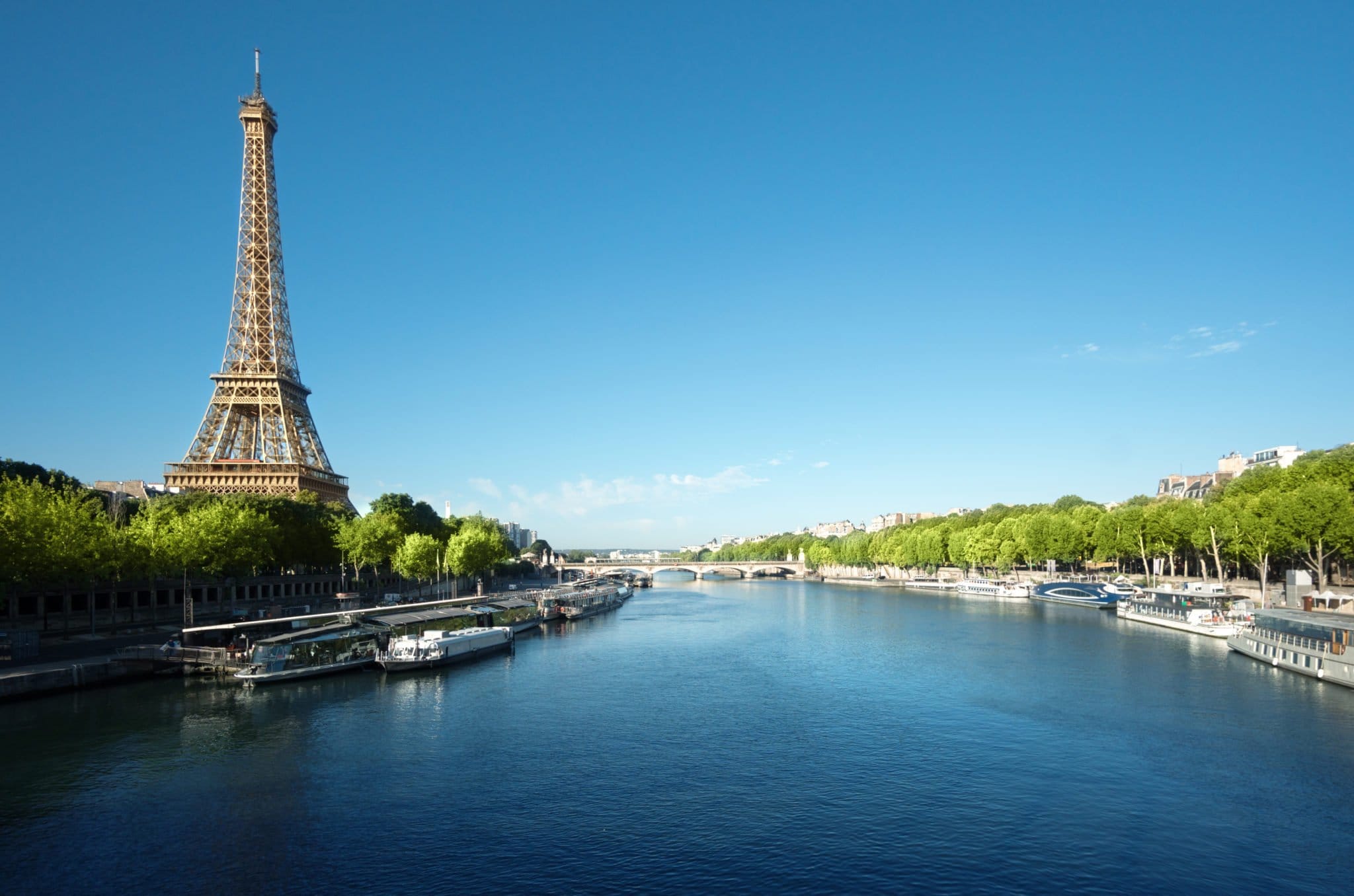
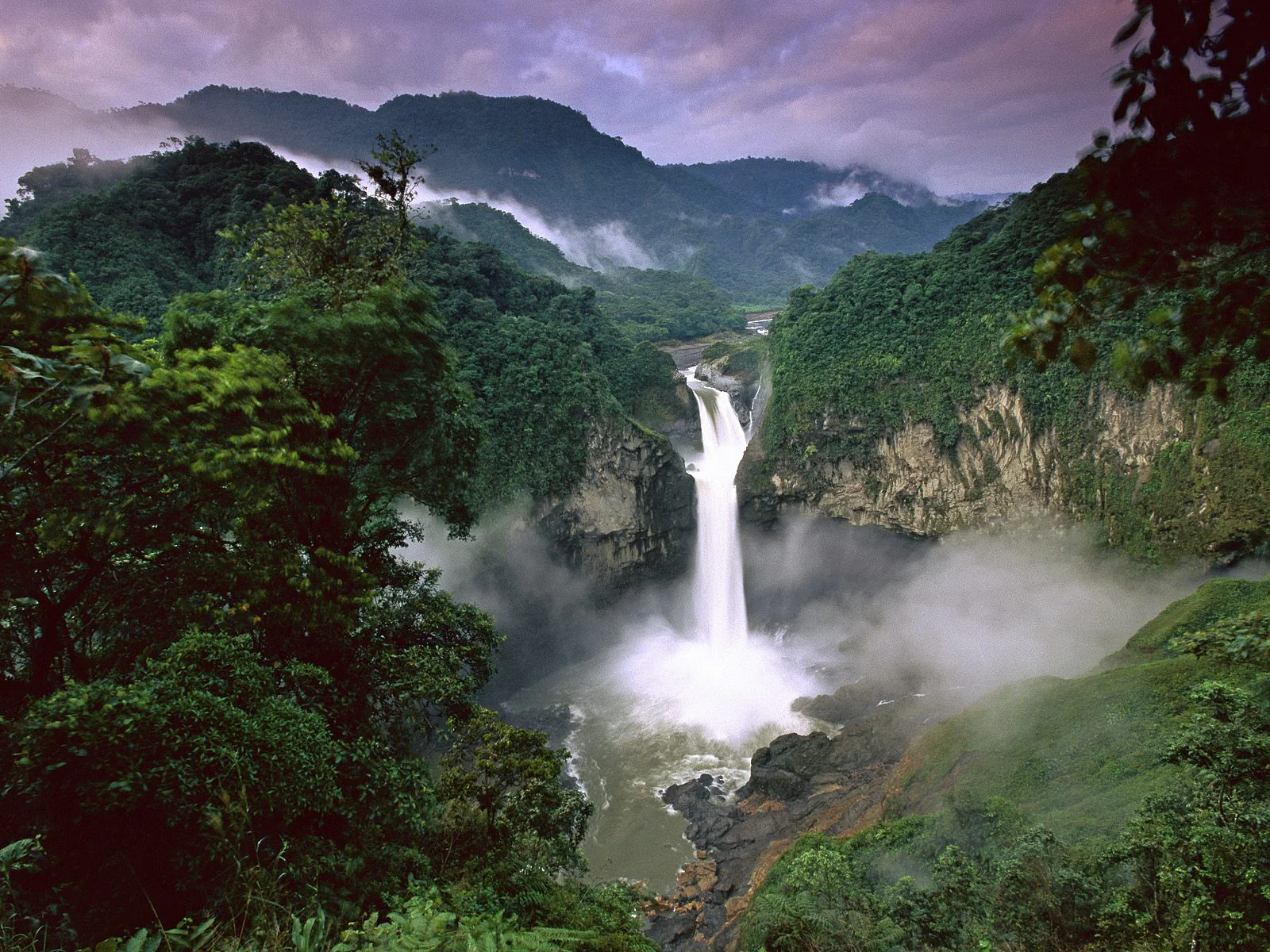
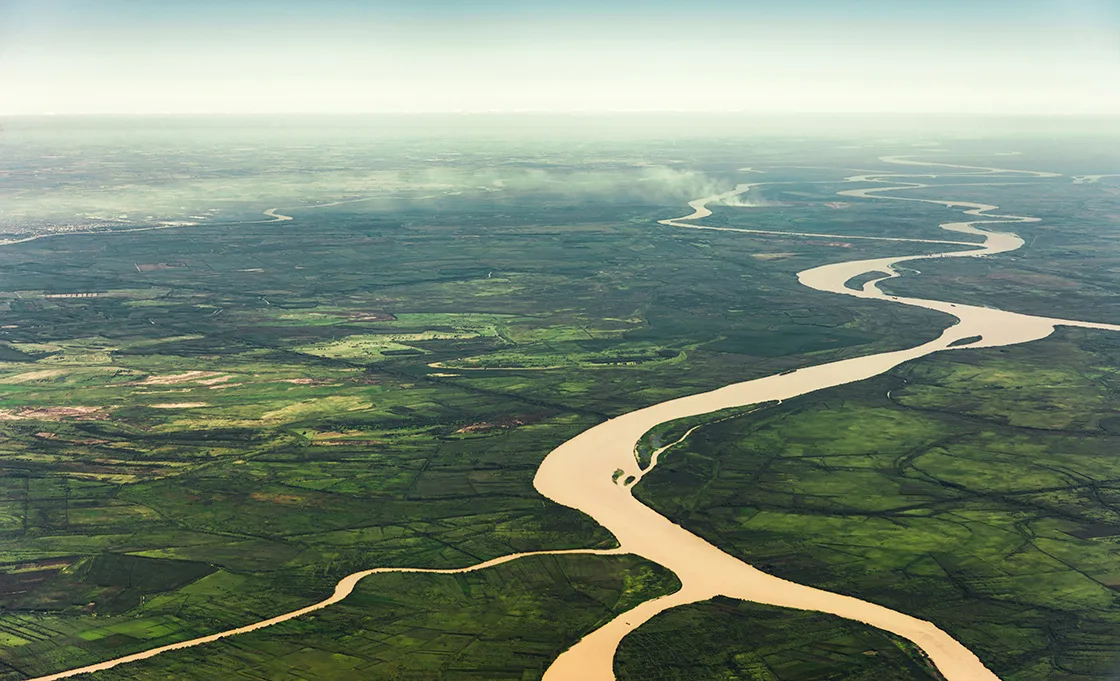
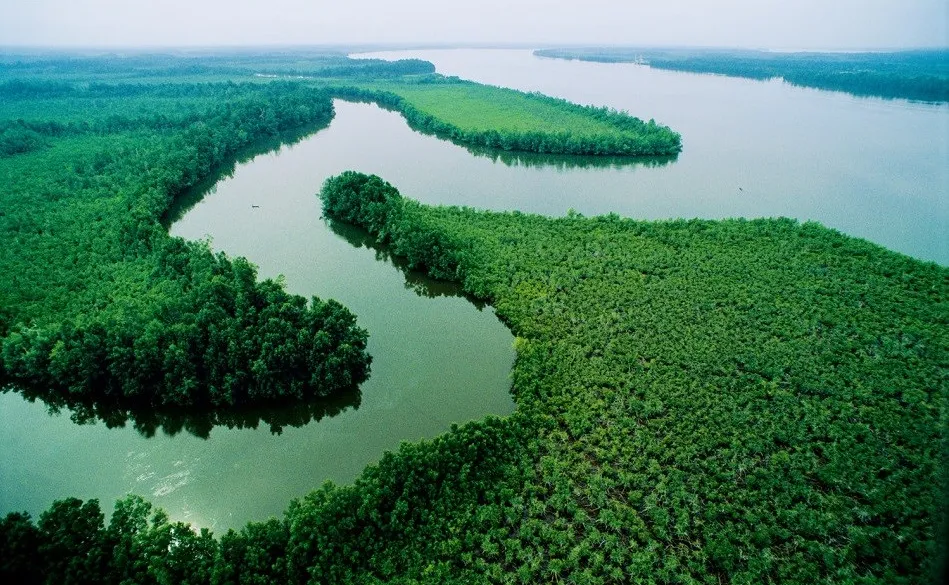
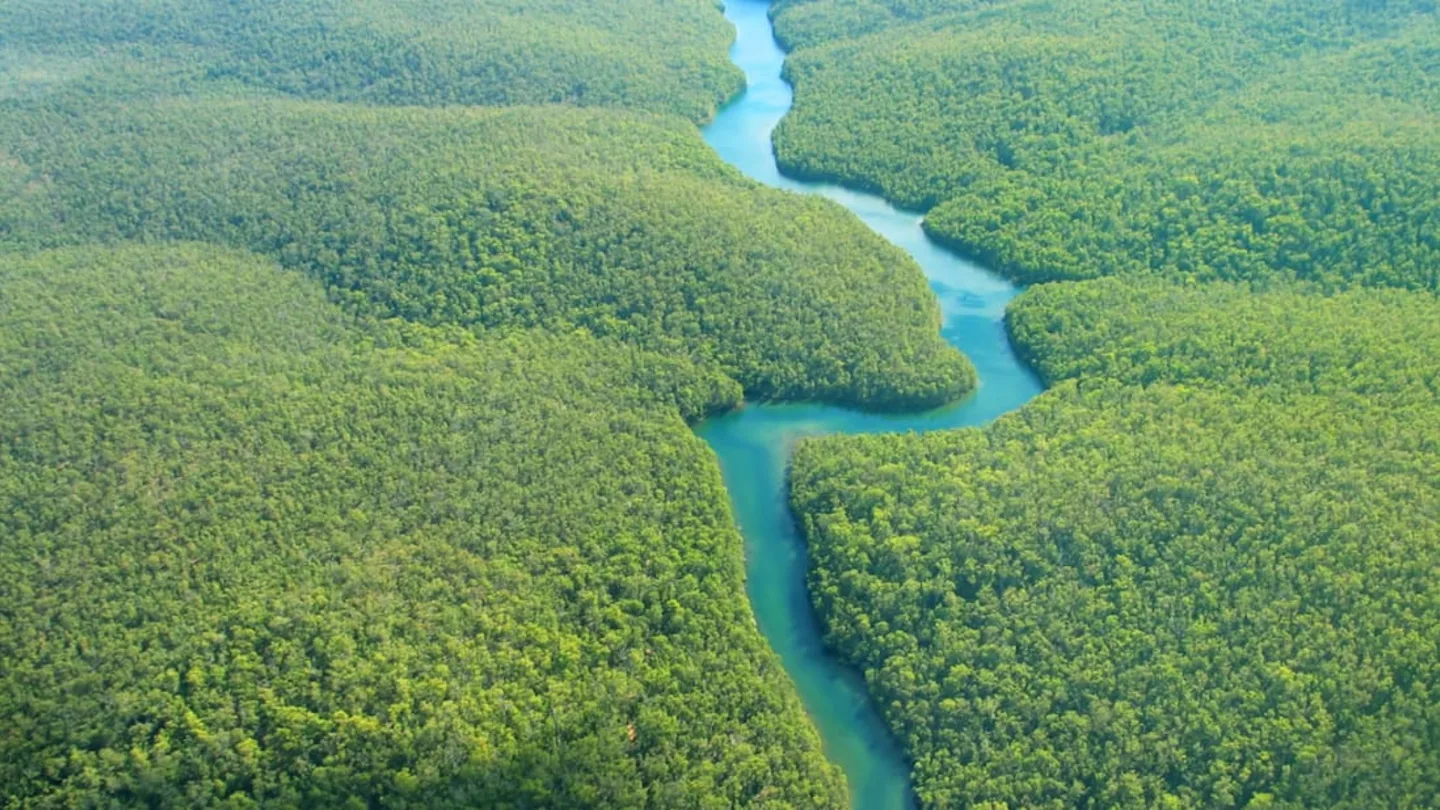
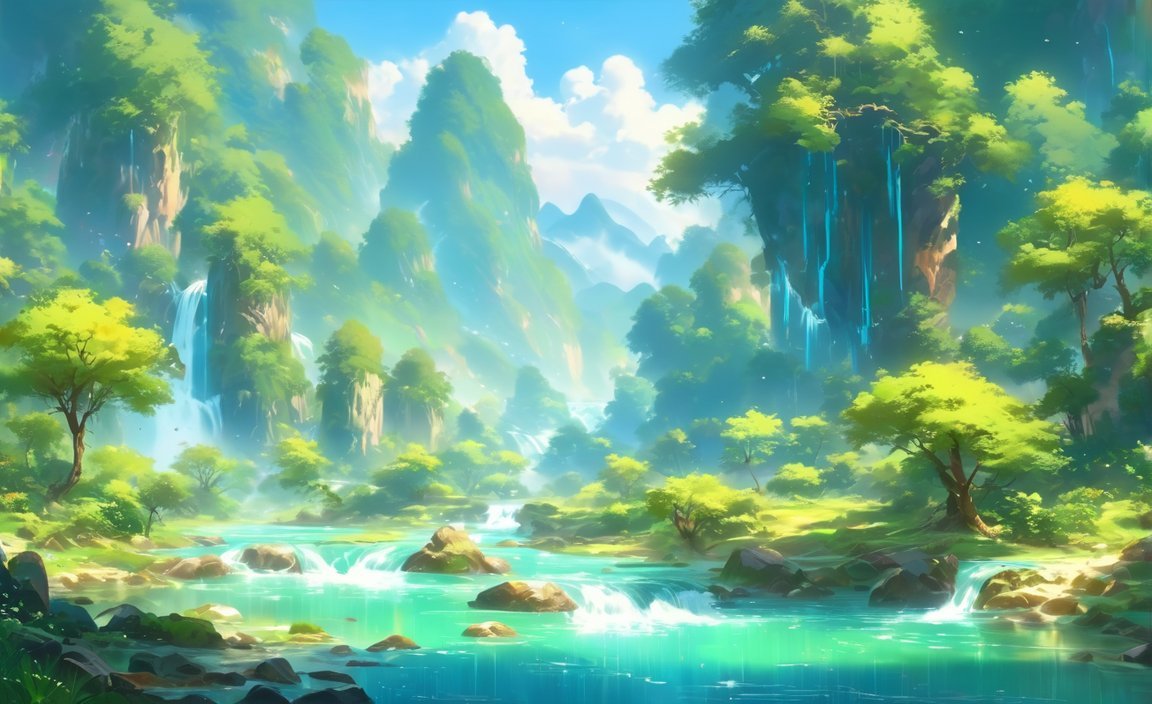
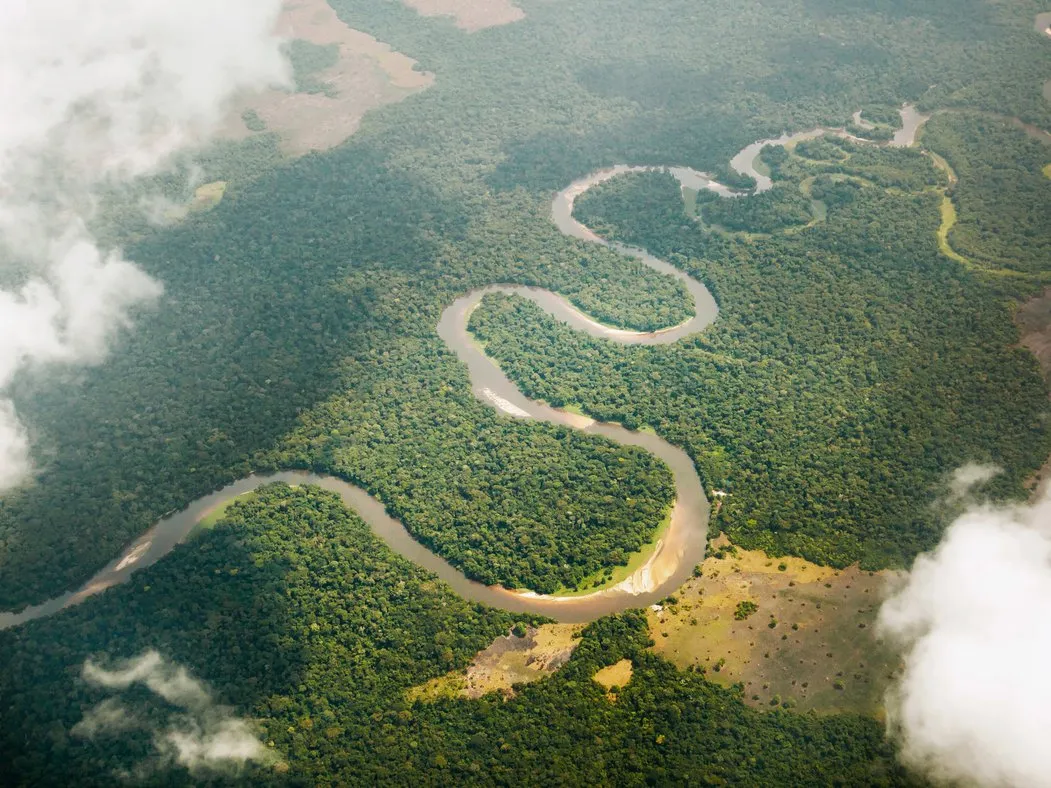








3 thoughts on “Journeying the Currents: Unveiling the Stories of Famous Rivers”
Comments are closed.